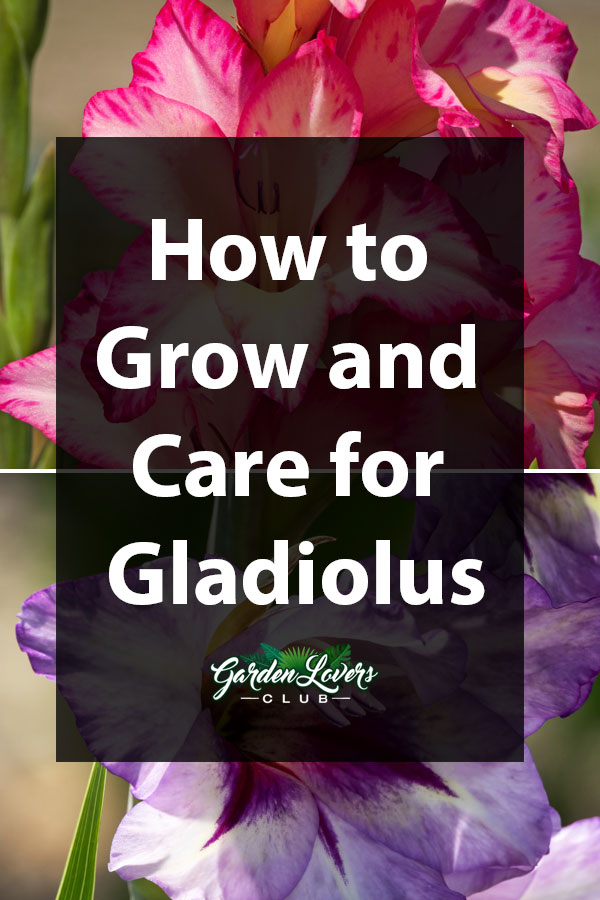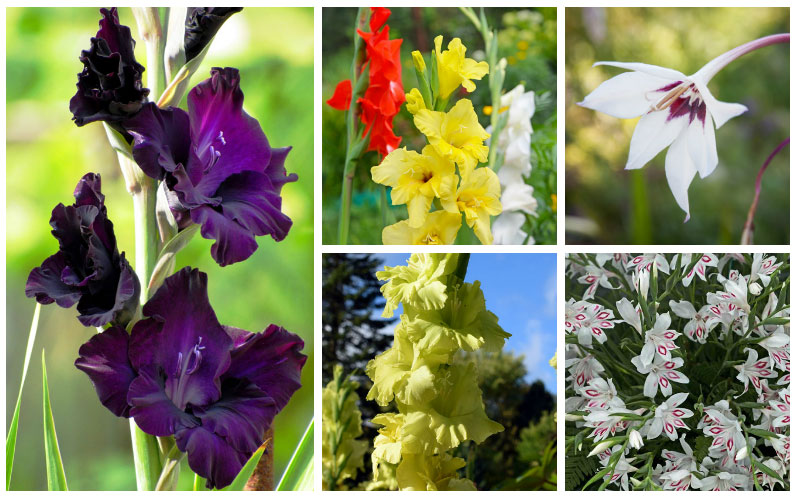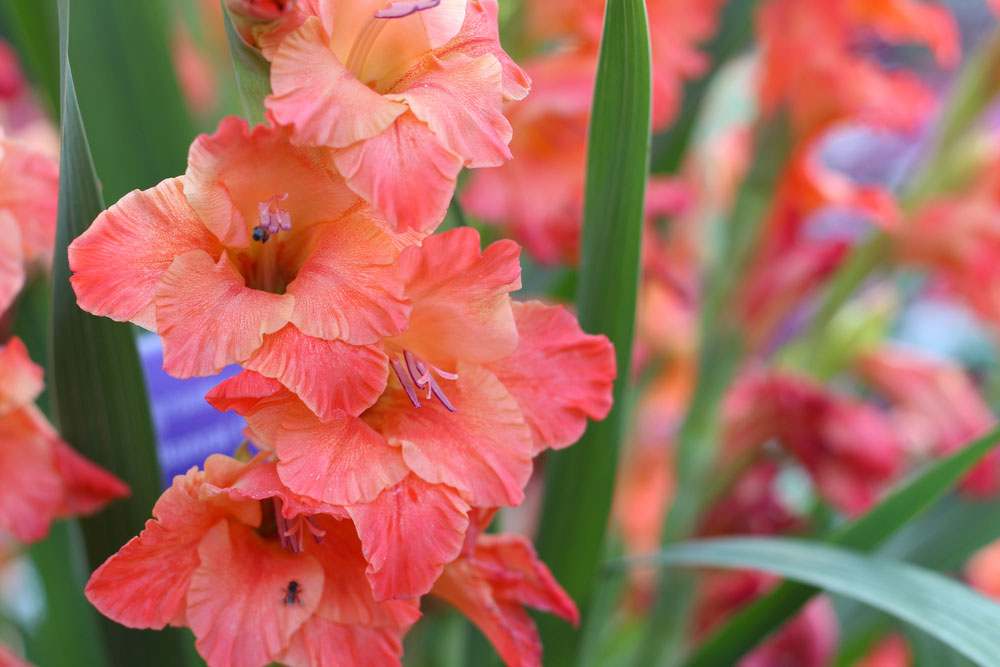One of my favorite flowers to add to a bouquet is a gladiolus. The spiky plant has bright blooms in shades of orange, pink, yellow, and white that are all stunning. They are readily available at florist shops, but why not grow these hardy plants in your own garden.
In his guide, we are going to take a look at the different varieties of gladiolus that are available and how to care for them both inside your home and in your garden.
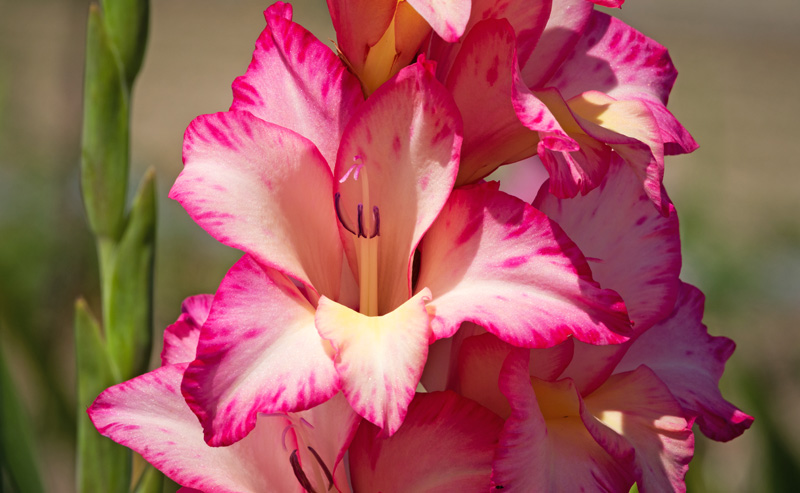
Growing Zone and Facts
Also known as a sword lily, these hardy plants can grow in zones two through 10, but they can only be grown as perennials in zones eight through 10. In the remainder of the zones, you will be forced to grow them as annuals.
There are over 250 different species of gladiolus plants, all of which originate in Central Africa, South Africa, and Eurasia.
The flowers can grow in a variety of shapes that range in size from about two and a half inches to more than five. The flowers will only grow on one side of the stem, and they tend to have the largest flower at the base. The flowers on the bottom of the plant will typically open first, and it is not uncommon for hummingbirds to enjoy this flower.
How to Plant and Care
This is not a difficult plant to grow, but you will need to know a few things about them before adding them to your garden. Some of the most considerations for their care include:
- When to Plant Them – These plants typically take at least 60 days to flower, so depending on where you live, you may want to vary when you plant them to stretch out the blooms. In general, you will want to plant them about a month before the last frost of the season.
- The Spacing – To make sure that these plants grow properly, you are going to want to plant them about six inches from each other and at least two inches into the soil. With bigger corms, you will need to go a little deeper into the soil.
- Soil – Well-drained soil is going to be best for this plant; in fact, sandy soil is preferred by some gardeners.
- Water Requirements – Gladiolus plants like moist soil, which means that they should get at least an inch of water a week. To help maintain moisture in the soil, you can place two to three inches of mulch at the base of the plant.
- Lighting – They tend to grow best in full sun.
- Stalking the Plant – These plants can grow to be about four to five feet tall, so they will need to be stalked so that they do not fall over as they grow.
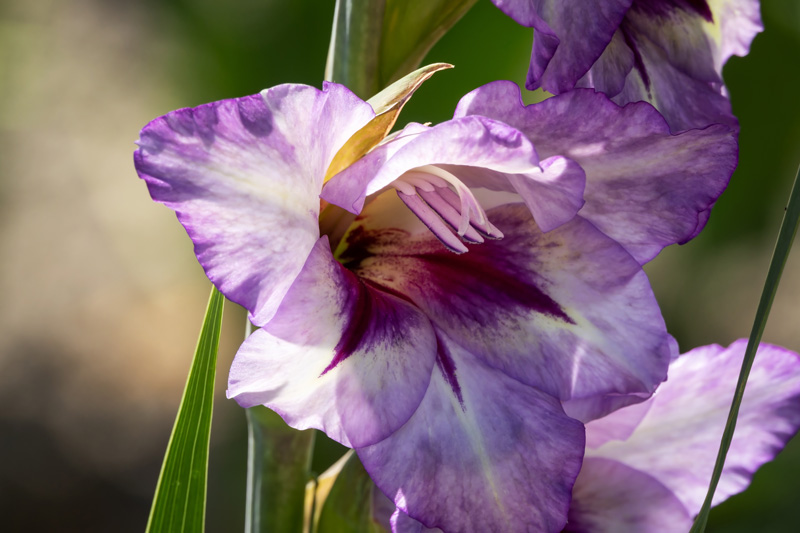
Growing in Containers
If you want to grow these plants inside, you will need to choose a smaller variety so that the plants do not outgrow the container. You will need a pot that has a lot of draining holes that are at least a foot deep and has a 12-inch diameter. Once the Corms are planted, you will need to keep the soil moist and provide the plant with a lot of sunlight.
Pruning
The blooms on these plants are lovely, but when they begin to fade and shrivel, you will find that the plant will grow much better when the blooms are deadheaded. Once all of the blooms on a specific stem are gone, you will be able to cut the stalk. This cut should be made about two to three inches above the soil. Gladiolus plants that are grown indoors will not typically need to be pruned.
Wintering
Every time that your plant blooms, the corm that you used to grow this plant will wither away. The new corms that form are the part of the plant that you will need to preserve to grow the following year. They will need to be stored in a way that the air is able to move freely between them. The humidity should be low, but the temperature cannot be so low that they freeze. Typically, about 35 to 45 degrees Fahrenheit is the ideal storage temperature. In warmer areas of the country, the plants will come back each year without any help.
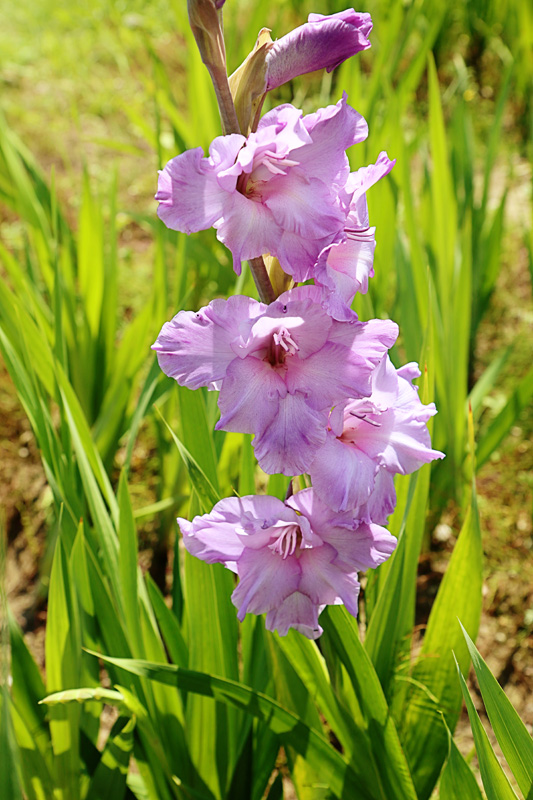
Propagation
To propagate this plant, you can use the corm to grow new plants each spring. This method may require a few years of planting for the plant to bloom, but you can also grow new plants by germinating seeds. To do this, you will need to leave the dead blooms on the property for a period of six weeks. After this, you will find a hard seed casing, which will require two to three years of care to bloom.
Common Problems
When it comes to pests that affect the gladiolus plant, there are quite a few big threats that you will need to take into consideration. Thrips are small insects that feed on the blooms and the leaves of the plant. If you have these pests, you may begin to notice white streaks and patches on the foliage, especially on ones that do not open. One way to ensure that these pests are not a problem is to dip the corms into boiling water before storing them for the winter. If they are already in the ground, you can spray the plant with Neem oil.
Plant Varieties
As we discussed, there are over 250 varieties of this plant that you can choose from for your garden; here are some of the most common:
- Candyman – This variation has deep pink blooms.
- Black Star – This plant can reach up to 60 inches in height. Typically, the blooms are a deep shade of purple.
- Dream’s End – This is a plant variety that grows to three feet in height and it has large orange blooms.
- Black Beauty – A plant with deep burgundy blooms that can grow to five feet high.
- Green Star – A bright yellow bloom that is perfect for floral arrangements.
- Peter Pears – These peach blooms have bright red centers.
- Prins Claus – This is a flower with a white bloom that has pink details on the peals.
